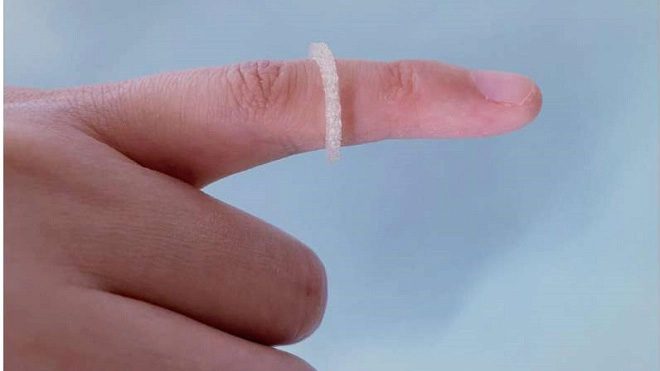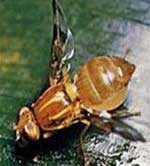Compact device opens up a future free from harmful mosquito sprays, as simply wearing a ring can repel insects.
Scientists at Martin Luther Halle-Wittenberg University (MLU) in Germany have successfully developed a new insect-repelling device. With the help of 3D printing, the components of the device can be molded into any shape convenient for the user. In their experiments, the research team 3D printed a ring that contains a chamber for mosquito repellent.

3D printed ring containing insect repellent compound – (Photo: Du Fanfan).
The prototype insect repellent is based on IR3535, a compound produced by MERCK. “Mosquito sprays containing IR3535 are gentle on the skin and have been used worldwide for many years. That’s why we chose it for our experiments,” said Professor René Androsch from MLU.
IR3535 provides protection for several hours. However, the research team at MLU is still striving to extend the effectiveness of the repellent by encapsulating the insect-repelling compound in a small chamber for long-term use. With a 3D printed ring, they have achieved this.
The scientists employed a special 3D printing technique to incorporate the insect repellent into a biodegradable polymer chamber. “Essentially, the insect repellent will continuously evaporate to form a protective layer for the user,” noted Du Fanfan, the lead author of the study.
The evaporation rate of the insect repellent depends on many factors, including ambient temperature, the concentration of the compound, and the polymer structure of the chamber. After numerous simulations on computer models and laboratory tests, the team predicts that the insect repellent in a 3D printed ring will take about one week to completely evaporate at a temperature of 37 degrees Celsius, which is also the average body temperature.
However, the device containing the insect repellent is still in the experimental stage. According to researcher Androsch, the team will need to conduct more in-depth studies to determine the device’s performance under real-world conditions. They believe that the material used for the chamber could be further optimized.
The research has been published in the International Journal of Pharmacy.





















































